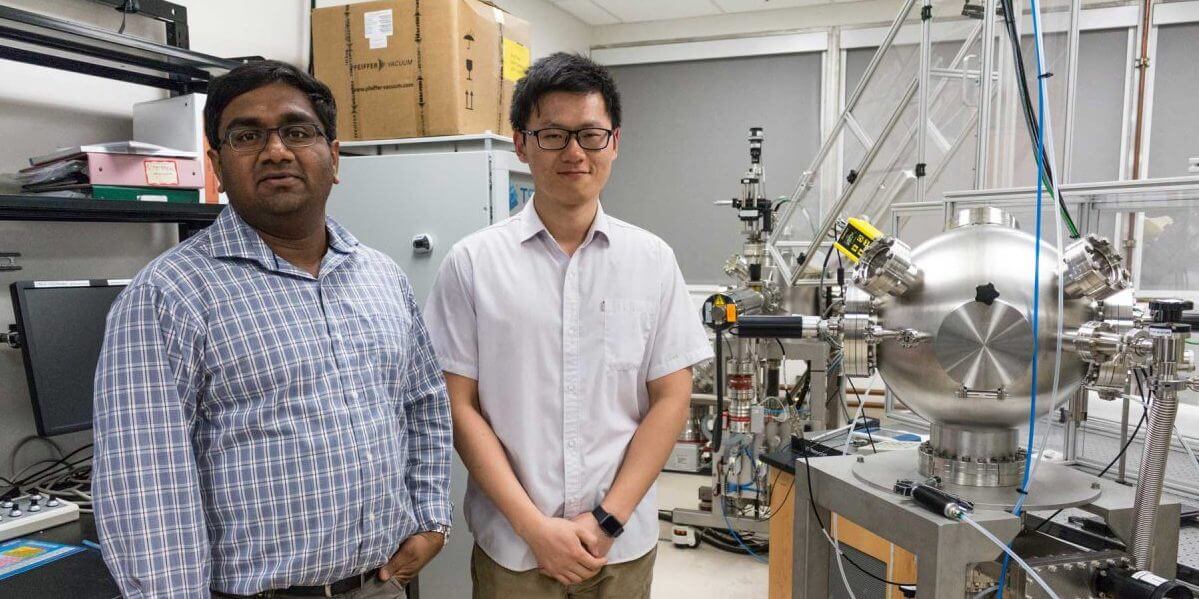
Seeing Through Rain and Fog
Materials developed by USC Viterbi Professor Jayakanth Ravichandran could allow autonomous vehicles to peer through the elements to improve safety.
Typically, navigation systems for autonomous cars use visible light to identify foreign objects. This works most of the time. But in misty, foggy, or rainy conditions, self-driving cars become a deer in headlights, largely unaware of upcoming obstacles. Scattered light confuses the car’s system, thus blurring the distinction between real objects and reflections from the scattered light itself. Under these conditions, autonomous cars cannot recognize upcoming obstacles that would be easily identifiable to the human eye.
To see through hazardous conditions, sensors within the cars need technology that can predict obstacles not immediately evident. Fortunately, Jayakanth Ravichandran, an assistant professor in the Mork Family Department of Chemical Engineering and Materials Science at USC Viterbi, wants to develop new electronic and optical materials that enable what he calls “next generation technologies” to improve the technology that surrounds people in their everyday lives, including self-driving cars.
“Look at the smartphones, computers and LED TVs around you,” Ravichandran said. “None of these existed, at least in the current form, 10 to 20 years ago. These are possible because of research on materials used in these technologies. My group is looking at developing materials that will be used in technologies in the next ten to twenty years.”
Ravichandran’s latest research, conducted with doctoral students Shanyuan Niu, Boyang Zhao, and master’s student Yucheng Zhou, found materials that might fundamentally change the way autonomous cars operate. Ravichandran’s group closely collaborated with Han Wang, an assistant professor in the Ming Hsieh Department of Electrical Engineering at USC Viterbi and Mikhail Kats, an assistant professor at the University of Wisconsin, Madison and this work was recently published in Nature Photonics.
Though the visible light typically used by autonomous cars to identify obstacles cannot function in fog, smoke or rain, infrared light can see through such conditions. Consequently, developing new infrared devices to function in these hazy viewing conditions could vastly improve the safety of self-driving cars, Ravichandran said.
His lab has just discovered a material which could work in such infrared devices.
The material – a composition with the chemical formula, BaTiS3 – could become functional in thermal imaging systems, one type of infrared device.
Thermal imaging systems can recognize changes in an object’s temperature by tracking the amount of radiation emitted from that object. By following the temperature changes of particular objects, thermal imaging systems can identify movement even in the absence of visibility – a crucial function for self-driving cars.
For an effective thermal imaging system, there must be a detector to sense the heat radiation and to provide a readable response, as well as a system for filtering and manipulating incoming radiation.
BaTiS3 currently works as a filter for the incoming radiation. It may soon work as a detector as well.
“We are exploring that now,” Ravichandran noted. “Most importantly, there are subtle connections between the performance of the device and the material properties. Our job is to identify that and look for the right type of materials based on this understanding.”
Though his lab’s project is still in its early stages, Ravichandran said that his team’s next step is to make a functioning device out of the material so that they can take it to market. He also hopes to find other compositions that may work in thermal imaging systems even better than BaTiS3.
The implications of the lab’s findings are exciting for uses outside of autonomous vehicle sensors as well.
“There are possibilities of using these materials to sense environmental pollutants, and biological agents in the air,” Ravichandran said. “If there is some sort of airborne disease, identifying those biological particles can become very easy with this technology.
“There are so many applications which can happen.”